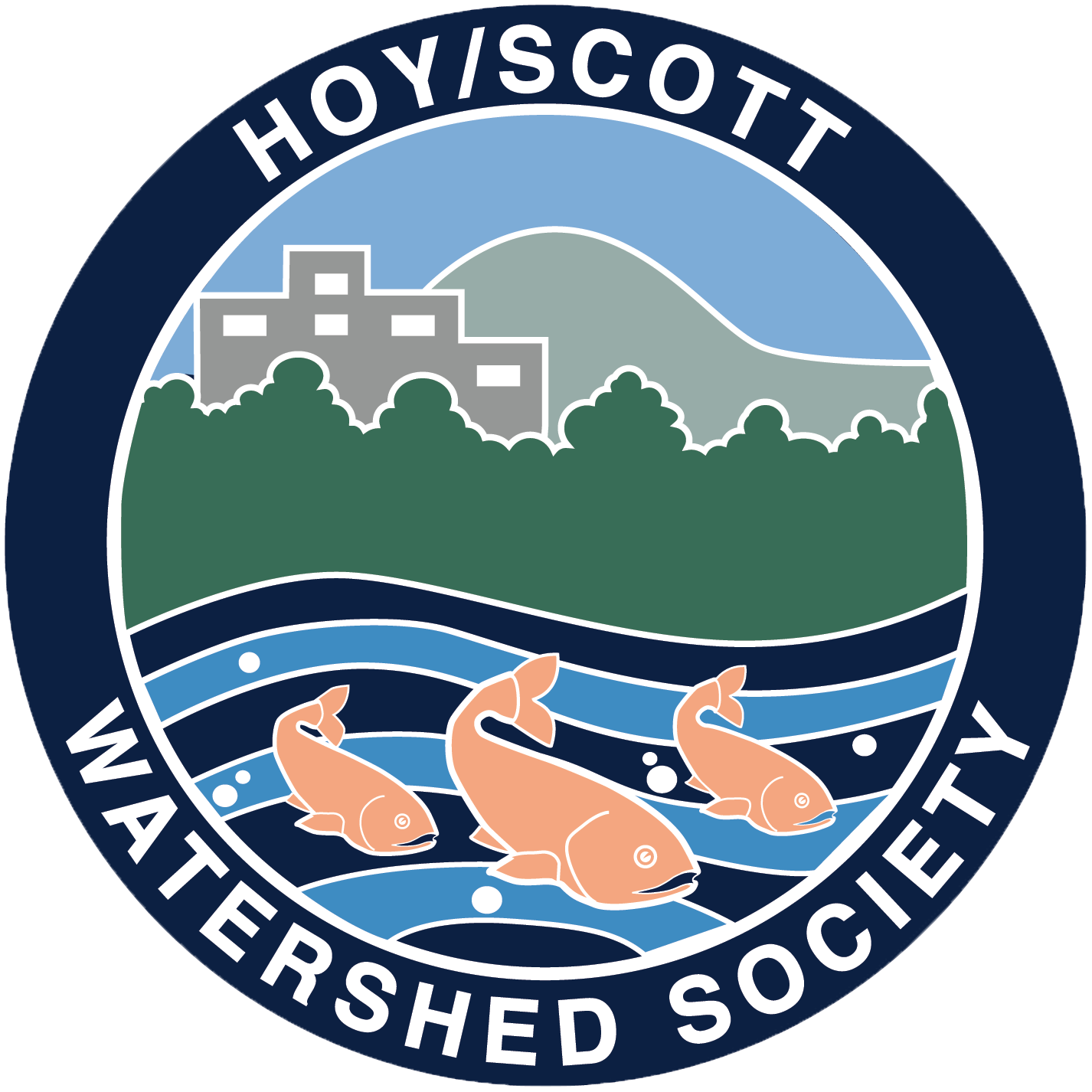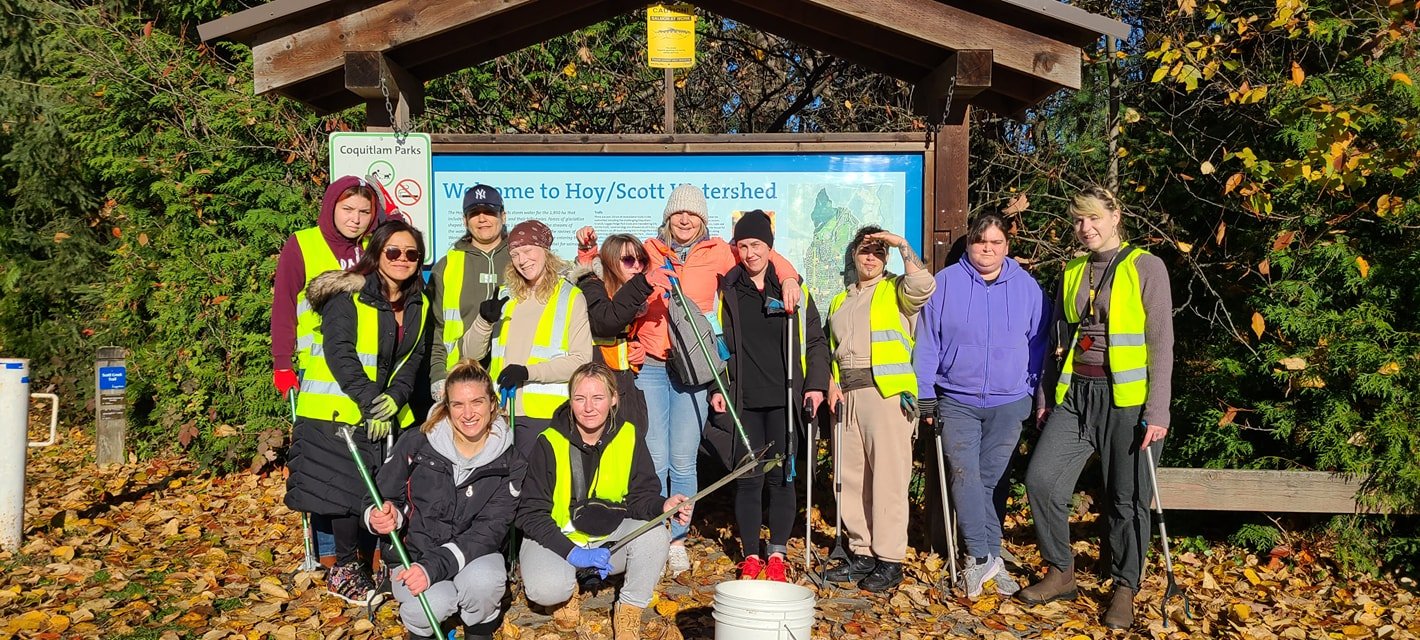Location via Google maps. The Hoy Creek Hatchery is located on Hoy Creek Trail, west of the City Centre Aquatic Complex at the corner of Pinetree and Guildford Way. Simply Google "Hoy Creek Hatchery" to locate.
Hoy Trail has several entrances:
- Walk-in from Princess Cres. west of City Centre Aquatics Complex
and Lafarge-Lake Douglas Station;
- Walk-in from behind Douglas College and head south;
- Walk-in from Guildford Way (between Johnson and Pinetree) and head north;
- Walk-in from Walton Avenue, or behind Walton Elementary and head south;
- Walk-in from the foot of Lasalle Place and head northeast.
Salmon of Hoy and Scott Creeks:
Chum salmon begin to arrive in early to mid-October through to early November. Generally, the peak of the run is around the 3rd week of October. They have dark red and black stripes.
Coho salmon arrive in late October through to late December. Typically, the peak of the run is the 2nd or 3rd week of November. There are very few fish around into December but there has been the occasional year with good numbers of fish in the stream through to mid or late December.
During odd-numbered years (e.g. 2021), Pink salmon may be found in Hoy and Scott creeks from September to early October. They are not typically found in large numbers.
Although they don't favor smaller streams like Hoy Creek and Scott Creek, occasionally, Chinook salmon from the Coquitlam River find their way into the creeks. This may happen under heavy rainfall conditions when the water levels in our streams and rivers are high. The occasional fish find the current in the creek attractive and detour away from the heavier flows in the Coquitlam River.
Learn more about the lifecycle of the salmon.
Enjoy your salmon spotting!
"The salmon runs are a visible symbol of life, death and regeneration, plain for all to see and share ... The salmon are a test of a healthy environment, a lesson in environmental needs. Their abundant presence on the spawning beds is a lesson of hope, of deep importance for the future of man."
-- Haig-Brown, 1974 (The Salmon)












